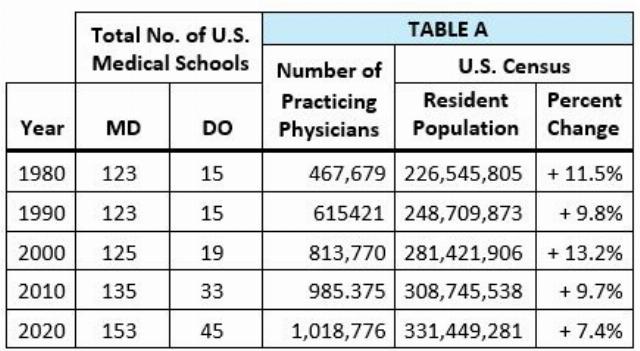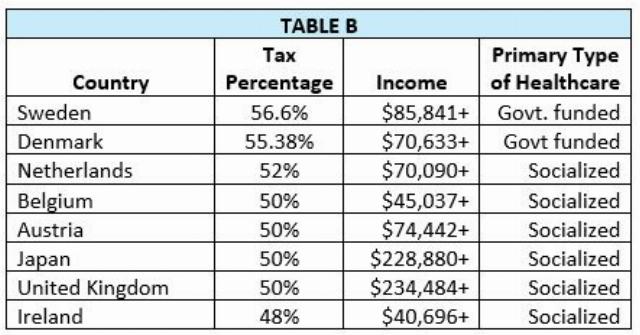
This article was originally published on American Thinker. You can read the original article HERE
Medicare is not free.
The Medicare payroll tax started in 1966 for private and corporate employers, their employees, and those who were self-employed at that time. Federal employees didn’t start paying Medicare taxes until 1983. Most retirees currently claiming Medicare have contributed throughout their lifetime, and monthly contributions continue to be taken out of Social Security benefits based on the previous year’s income. At the end of last year, it was announced that 2024 Medicare monthly premiums were going up 14.5 percent, and the Medicare Part B deductible is also increasing by $30. Early estimates indicate that the 2025 increase may be five to ten percent. The cost of expensive Medicare supplemental policies increase as we age and don’t cover everything — especially costly prescriptions.
Insurance is something you pay dearly for, all the while hoping you won’t need it. In the past, keeping yourself continuously insured meant you wouldn’t be subject to pre-existing conditions exclusion or wait periods for coverage. From my perspective, it was logical to exclude coverage for those individuals who would pay for insurance only when they needed it and not participate in the pool, spreading the risk. Unfortunately, if you have an accident or illness without insurance, you can end up paying for it for the rest of your life or go into bankruptcy.
Insurance companies regulate fees for service, and Medicare does not pay well. The following is important to consider: because of the low compensation, not all doctors accept Medicare patients. Some will limit the number to a small percentage of their panel, and others will accept Medicare patients if they pay an annual fee. Also, a surprising number of doctors and health care facilities such as physical therapy don’t accept Medicaid or Obamacare insurance. Some well established practices aren’t taking new patients, and some specialists will take patients only by referral.
Also, concierge medicine is on the rise. A concierge practice usually limits its patient rolls to fewer than 500 patients, which allows doctors to spend more time with patients and focus on preventative health care. Moreover, a concierge practice offers same-day visits when necessary, 24-hour access to the doctor, shorter waiting room times, and sometimes even house calls. Concierge Medicine Today states that about 5,000 to 7,000 physicians and practices provide concierge care in the United States, most of whom are primary care providers. Average annual fees typically range from $1,200 to $50,000, with a few as much as $100,000, though that high a fee is not characteristic.
Unfortunately, there are simply not enough doctors to provide health care for everyone in the country, and it is not expected to get better. Jenny Yang writes at Statista that “by the year 2036, a shortage of 13,500 to 86,000 physicians is expected in the United States.”
In four decades from 1980 to 2020, the population has increased by about 105 million. The number of medical schools and practicing physicians did not keep pace with the population growth, and a large percentage of physicians are over 40 years old. In Table A below, the number of practicing physicians includes all specialties, and the population figures do not include the 20+ million illegal aliens in the country if they weren’t included in the Census.
Table sources: U.S. Census, statista.com and FSMB Census, Federation of State Medical Boards.
Other countries have varied levels of success in providing national health care, and most are overburdened and in decline. They are bloated, wasteful, and rife with fraud, costing in the billions. Wait times for some services exceed two years, and many people are dying before they can be seen. Their governing bodies are considering limiting services for the elderly, or already doing it, since they are closer to their end of life, with a reduced return on investment. We are not exempt, as those very discussions are also taking place among health care professionals in our country.
To pay for these bloated health care systems, other countries’ citizens’ income, property, inheritance, and sales tax are extraordinarily high by U.S. standards. Examples of some of the highest income taxes are in the following countries are listed in Table B below:
Unfortunately, high income taxes are just the beginning. In the U.K., sales tax on “shopping and services” is 20 percent, though some goods qualify for less. Their inheritance tax rates have a lot of “if, then” clauses, so I won’t try to explain it all, but the rate can be as high as 40 percent. When you purchase your first property above the £125,001 threshold, a Stamp Duty tax of 2–10 percent of the value of the property is due based on the amount paid. Stamp duty on additional properties purchased ranges between 3–15 percent. Capital gains tax upon sale of an asset or property can range from 18 to 28 percent, depending on your income.
In Belgium, inheritance tax can reach 90 percent if the beneficiary is not related to the decedent. They have a sliding scale that is dictated by the degree of familial relationship.
Many foreign health care systems employ arbitration, and there are only occasional low malpractice payouts. Personally, I think our collective propensity to litigate for every little thing has greatly increased the cost of health care. Although I couldn’t find out the current exact costs for malpractice insurance, based on previous information, surgeons may pay more for it than most people earn in a year.
After studying the pros and cons of health care in the U.S. and other countries, I have some observations.
- The best health care is self-care. People who eat nutritious food, exercise, get enough sleep, avoid drugs, and limit alcohol intake tend to enjoy better health. It is important to promote and maintain your own health.
- Be an advocate for yourself, and don’t wait if you don’t feel well, have severe pain, find a lump, or have symptoms that don’t subside. Seek out a professional opinion now. “Dr. Google” is not a substitute for an experienced medical opinion. That said, speak up for yourself and don’t allow your symptoms to be dismissed if you “know” that something is wrong. Unfortunately, a few of my friends have died because their symptoms were dismissed multiple times, and when they were finally taken seriously, it was too late.
- There is no one-size-fits-all solution for providing medical care to all of our citizens, and it certainly can’t be legislated. Health care needs differ in cities, small towns, and rural areas. This needs to be addressed by a coalition of thinkers with common sense from all industries on state and regional levels. There are myriad smart and talented individuals who could work together to formulate affordable solutions.
Instead of everyone staring at his toes, waiting for someone else to make improvements in our health care system, I encourage everyone to become part of the solution. Be the external force that breaks the inertia to get ideas generating and solutions implemented.
My lasting wish is that everyone could enjoy good health and have affordable expert care available. Together, we can make it happen, but Medicare for all is not the solution.
Wikimedia Commons, CC BY-SA 2.0.
Image: Pkd2016 via Wikimedia Commons, CC BY-SA 2.0.
This article was originally published by American Thinker. We only curate news from sources that align with the core values of our intended conservative audience. If you like the news you read here we encourage you to utilize the original sources for even more great news and opinions you can trust!












Comments